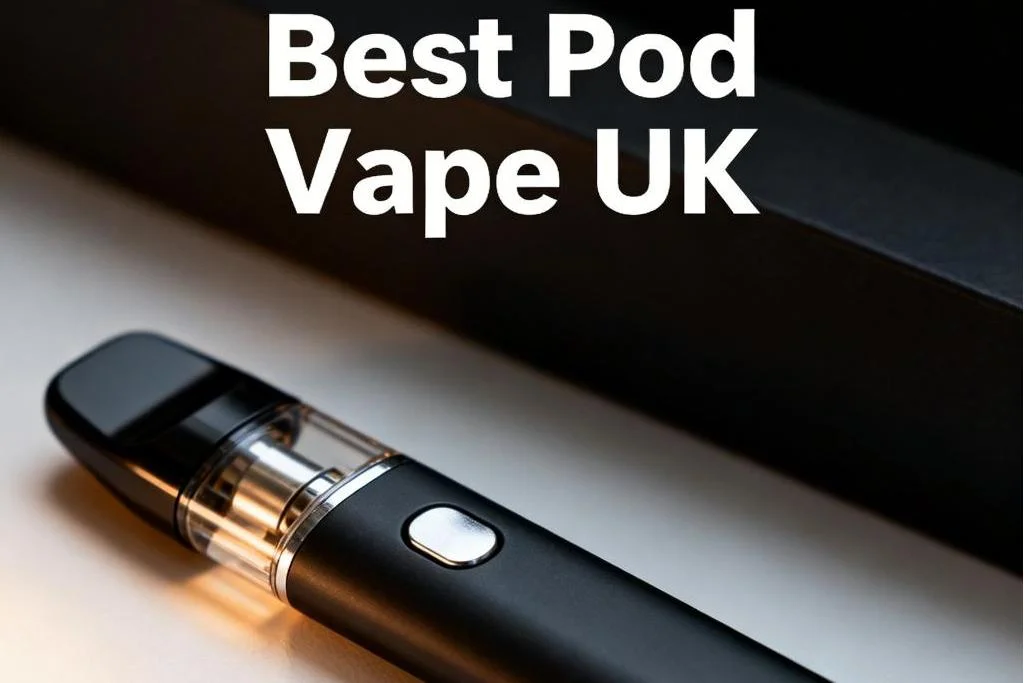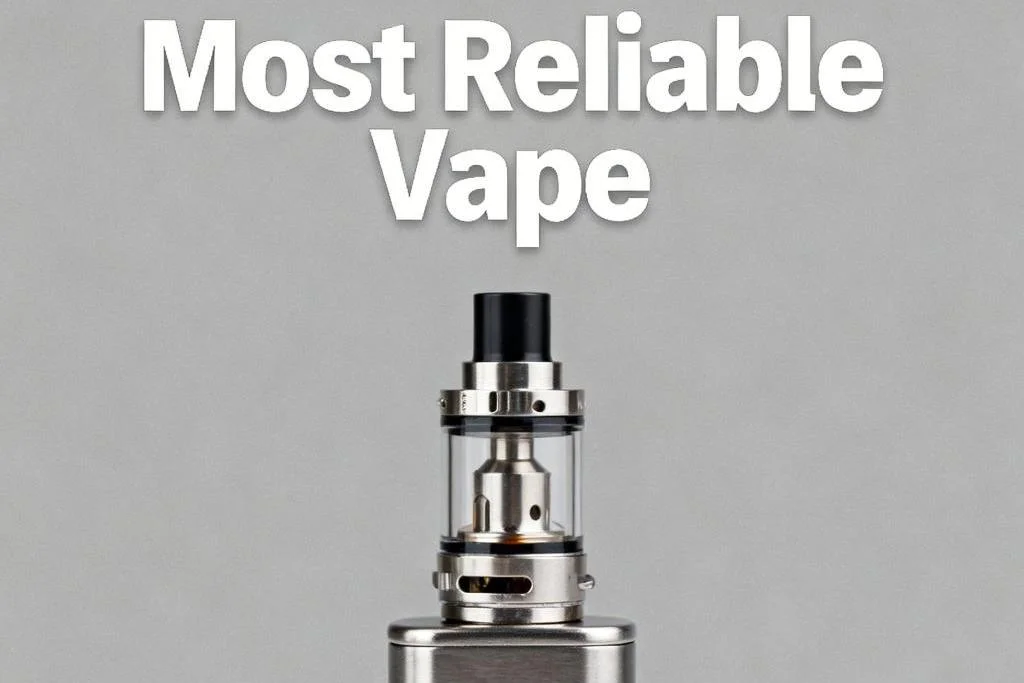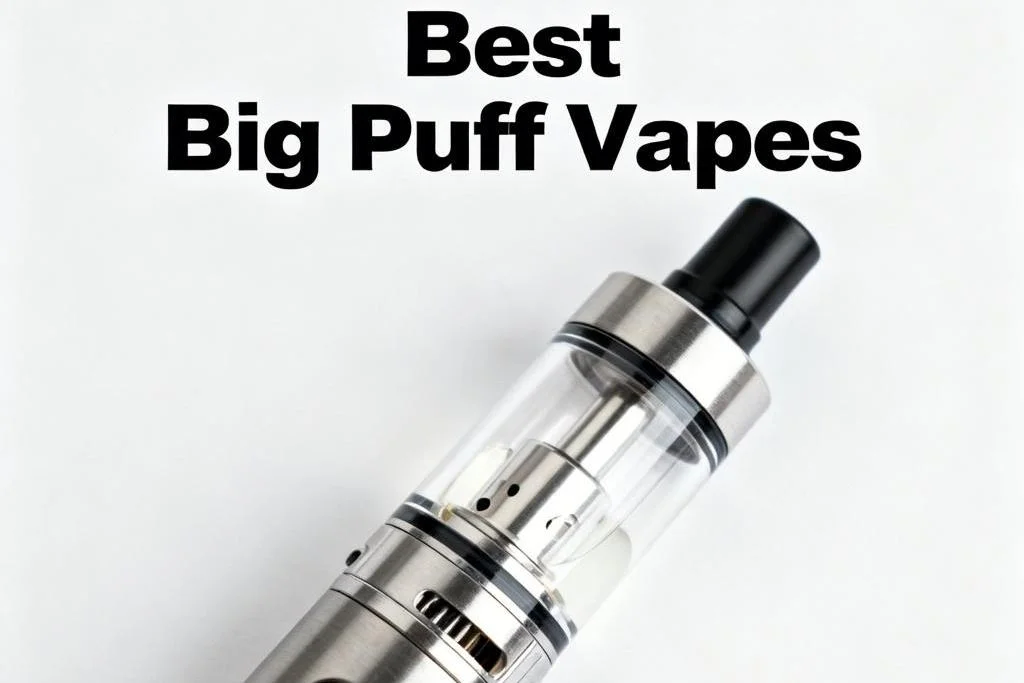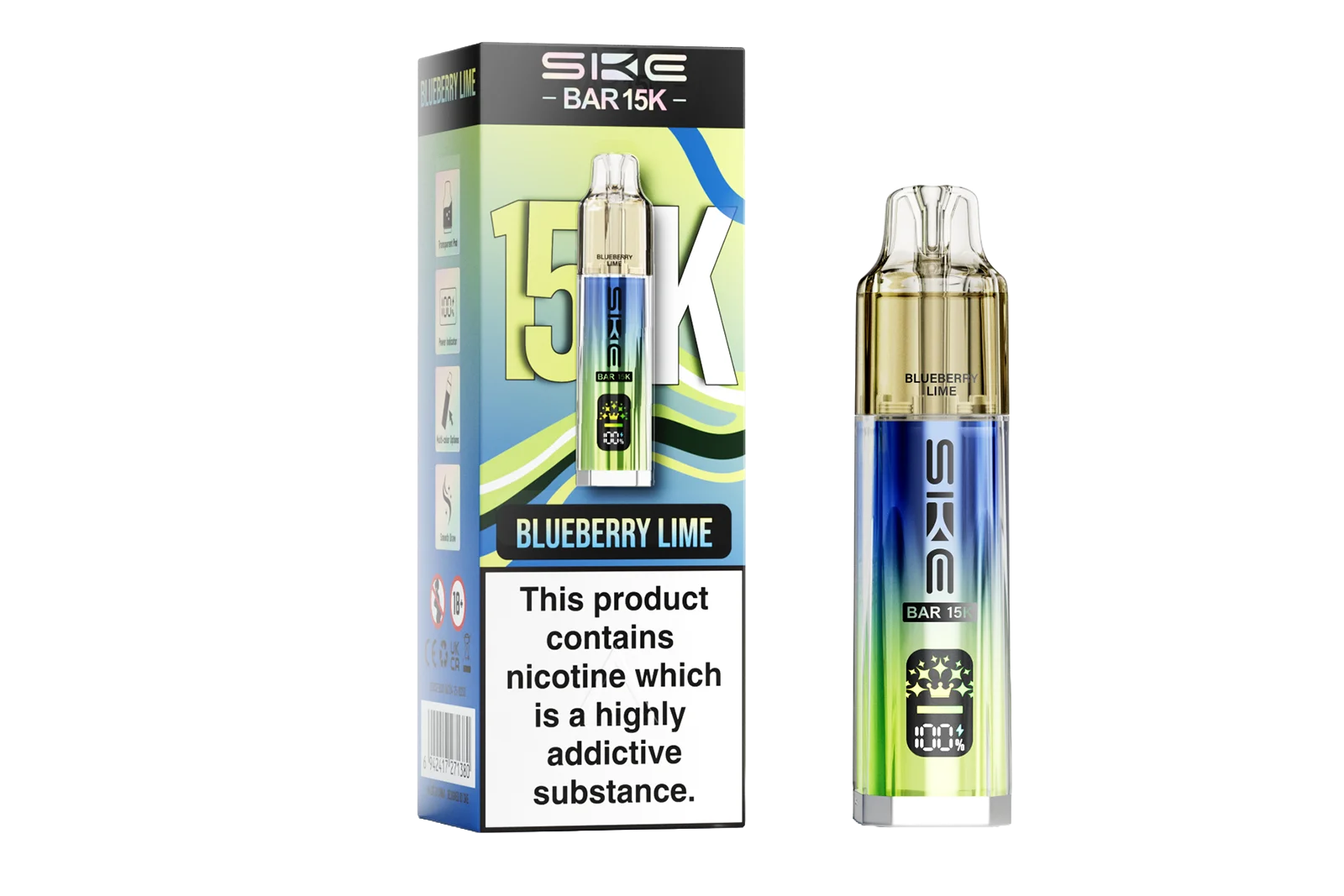Why Does My Vape Have No Flavor?
If you're a vape enthusiast, you know there's nothing worse than taking a puff and finding that your once-flavorful vape has gone bland. You might be wondering, why does my vape have no flavor? It can be incredibly frustrating when that satisfying taste suddenly disappears, turning your favorite e-liquid into a tasteless cloud. The good news? There are a few common culprits behind this lack of flavor, and with a little troubleshooting, you'll be back to enjoying those delicious hits in no time.

1. E-Liquid Ingredients and Quality
Think of your e-liquid as the heart of your vaping experience: if the heart isn't strong, everything else falters.
Not All Flavorings Are Created Equal
Higher-quality e-liquids tend to use concentrated, food-grade flavorings specifically designed for vaping, rigorously tested for safety, quality, and consistency. In contrast, lower-quality e-liquids may use cheaper, less potent flavorings that can taste flat or chemically.
If your vape has no flavor, it might be because you're using an e-liquid with inferior flavorings that just don't deliver the taste you're looking for.
Flavor Dilution: More VG, Less Flavor
While VG is known for producing thick, dense vapor, it doesn't carry flavor as well as PG. A high VG content in your e-liquid might result in a muted flavor, particularly when your vaping device isn't optimized for such thicker juices, causing the flavor to seem weak.
Artificial vs. Natural Flavorings
Natural flavorings, derived from real fruits, herbs, or spices, can provide a richer, more complex flavor profile. However, they may be less stable and degrade faster than artificial ones. On the other hand, artificial flavorings are crafted to be more consistent and withstand longer storage periods without losing their potency.
If you've noticed that your vape juice tastes flat, it could be due to the natural flavorings degrading over time. Conversely, some artificial flavorings can taste overly synthetic, which might also contribute to a less satisfying experience.
Storage Affects E-Liquid Quality
Vape liquids are sensitive to their environment: prolonged exposure to heat, light, or air can degrade the quality of the flavor compounds. For example, leaving your e-liquid in a hot car or under direct sunlight can break down the ingredients, leading to a dull, bland taste. Oxygen is another enemy — when an e-liquid is exposed to air for too long, it undergoes oxidation, altering both the color and flavor, making your vape taste stale or flavorless.
Expiration Date: A Silent Flavor Fader
After their expiration date, e-liquids can have ingredients that break down and lose their original taste. While expired e-liquid may not necessarily be harmful, it often tastes muted, flat, or off, which might explain why your vape has no flavor.
Nicotine Oxidation and Flavor Degradation
When exposed to air, nicotine oxidizes, causing a color change to a darker hue and altering the flavor profile, often generating a more peppery or harsh taste. This oxidation process not only affects the nicotine content but can also impact the overall flavor of the e-liquid, making it taste muted or off-putting. If your vape has no flavor, it could be a sign that the nicotine in your juice has started to degrade.

2. Vaper's Tongue: A Surprising Cause
Vaper's tongue, also known as flavor fatigue or vaper's fatigue, is a peculiar yet common experience among regular vapers. If you've faced a vape that has no flavor and found yourself perplexed by an unexplained loss of taste, this could be your culprit.
How Does Vaper's Tongue Happen?
It's primarily a result of sensory adaptation. Our bodies optimize to detect new stimuli, so when our senses are exposed to the same input repeatedly, they tend to ignore or "tune out" that input. In the context of vaping, continuously inhaling the same flavor profile overwhelms the taste receptors, causing a reduced ability to perceive that specific flavor. It's why you may notice that your once-beloved e-liquid suddenly lacks the punch it used to have.
Additionally, the vaper's tongue can be influenced by dehydration. E-liquid ingredients like Propylene Glycol (PG) are hygroscopic, meaning they attract water. Dry mouth, or xerostomia, reduces your ability to taste properly, exacerbating the effects of flavor fatigue. When your mouth is dry, the taste buds have difficulty picking up flavors, leading to the sensation that your vape has no flavor.
The Role of Smell in Vaper's Tongue
Although it may not be obvious, your sense of taste relies heavily on your sense of smell. The aroma of the e-liquid plays a significant role in your vaping experience, as roughly 80% of what we perceive as flavor actually comes from our olfactory senses.
If you're suffering from a cold, nasal congestion, or even seasonal allergies, your sense of smell might be diminished, leading to a muted flavor experience. Similarly, prolonged exposure to the same scent can cause your olfactory receptors to become desensitized.
3. Incorrect Wattage Settings
Think of your vaping device as a finely tuned instrument, where even a slight variation in settings can greatly impact how your vape tastes.
Why Wattage and Temperature Matter
In vaping, wattage refers to the amount of power your vaping device sends to the coil, which heats up and turns your e-liquid into vapor. Nonetheless, temperature control allows you to set a specific temperature at which the coil will heat the e-liquid.
When Wattage Is Too Low: Why Less Isn't Always More
When your wattage is too low, the coil may fail to reach the necessary heat to fully vaporize the e-liquid, producing a thin, weak vapor devoid of any distinct taste rather than a satisfying, flavorful hit. It can be especially frustrating for a more viscous, high VG (vegetable glycerin) e-liquid, which requires more power to vaporize properly.
Low wattage can also cause something called “underheating.” In this situation, the coil is not hot enough to break down the flavor compounds in the e-liquid, so the taste remains muted. You might also experience “spitting” or “gurgling” sounds, which occur when the e-liquid is not being vaporized properly and instead condenses inside the mouthpiece, further reducing flavor intensity.
When Wattage Is Too High: The Risks of Going Overboard
On the flip side, setting the wattage too high can cause the e-liquid to vaporize too quickly, leading to what's known as “dry hits,” which occur when the wick inside the coil is dry and burns instead of vaporizing the e-liquid.
High wattage can also degrade the flavor compounds in the e-liquid. When the coil becomes too hot, it can cause certain flavor components to burn or break down, resulting in a bitter, burnt taste. For instance, delicate fruit or dessert flavors might be particularly sensitive to high temperatures, losing their nuanced taste and becoming harsh or acrid. In some cases, you might even get a chemical-like flavor if the e-liquid contains sweeteners that caramelize or burn at high temperatures.

4. Coil Issues: Burnt or Old Coils
Coils are the components responsible for heating the e-liquid and turning it into the flavorful vapor you inhale. Over time, coils can degrade, accumulate residue, or even burn out, all of which can severely impact the quality and intensity of the flavor you get from your vape.
What Happens When a Coil Gets Old or Burnt?
In the long run, the coil will inevitably wear out as the e-liquid residue from the flavorings, sweeteners, or other additives accumulates on both the coil and wick, creating a layer of gunk that insulates the coil, preventing it from heating up evenly or efficiently. When the coil struggles to heat properly, it won't vaporize the e-liquid correctly, which can lead to a weak or muted flavor.
A burnt coil is another frequent issue. The coil becomes extremely hot when you vape, particularly at high wattages or temperatures. If there isn't enough e-liquid on the wick — either because it hasn't had time to saturate or because the e-liquid is too thick — the coil can start to burn the wick itself, generating a burnt taste that overpowers any other flavors. Even if you aren't getting a strong burnt taste, a coil beginning to burn will affect the flavor quality, making it taste harsh, metallic, or simply off.
Impact of Coil Material on Flavor
With coils available in materials like kanthal, stainless steel, nickel, and titanium, each type brings unique properties that affect the flavor. For example, stainless steel coils are known for delivering clean, crisp flavor, whereas kanthal coils are more durable but might not deliver as vibrant a flavor profile. Choosing the right coil material for your e-liquid and vaping style can make a noticeable difference in flavor.
Additionally, some coils are specifically designed for certain types of vaping. DTL coils are often low-resistance and cater to higher wattages, which produce more vapor but may also mute some flavors if not paired correctly with the right e-liquid.
5. Airflow Settings Matter
Airflow setting is more than just a tweak for cloud chasers — it plays a substantial role in determining the intensity, concentration, and quality of the flavor you experience.
How Airflow Affects Flavor
When you adjust the airflow, you're essentially controlling the dilution of the vapor. Here's how it works:
Open Airflow: When your airflow is wide open, more air mixes with the vapor, bringing about larger clouds but a lighter, less concentrated flavor, as it disperses the vapor particles quickly, causing them to spread out and lose some flavor intensity before reaching your taste buds.
Tight Airflow: However, a too-tight airflow can result in a harsh draw or an overly warm vapor, which can mute certain flavor notes or make the experience less enjoyable.

6. Wick Saturation and Priming
Achieving a flavorful vaping experience relies heavily on wick saturation and proper priming, as a dry, flavorless hit is often caused by inadequate wick saturation.
What Happens When the Wick Is Dry?
Dry Hits: A dry hit may cause the coil to burn the wick itself instead of vaporizing the juice, resulting in a harsh, acrid taste that ruins the flavor and irritates your throat.
Flavor Muting: The coil isn't getting enough e-liquid to vaporize, producing a less dense vapor and a diminished flavor profile, which can be especially noticeable with more subtle e-liquid flavors that rely on consistent vaporization to deliver their full complexity.
Burnt Wick: It may risk burning the cotton or other materials that make up the wick, imparting a charred, unpleasant taste that contaminates every hit, no matter how much e-liquid you add afterward.
7. E-Liquid Nicotine Strength
While most people think of nicotine levels purely in terms of throat hit or nicotine satisfaction, the reality is that nicotine can also influence how you perceive the taste of your vape juice.
How Nicotine Strength Affects Flavor
Higher Nicotine Levels Can Mute Flavors: E-liquids with higher nicotine concentrations (such as 18mg/mL or 24mg/mL) are known for delivering a strong throat hit that dominates your sensory perception, which can sometimes overshadow or dull the flavor of the e-liquid itself.
Nicotine Has Its Own Taste: Nicotine itself has a distinct, slightly bitter, or peppery taste, especially at higher concentrations, which may alter the flavor profile of the e-liquid, sometimes making it harsher or less enjoyable. For instance, delicate or light flavors, such as fruits or florals, might seem muted or less vibrant when paired with high-nicotine e-liquids, as the inherent bitterness of nicotine can overpower the subtler flavor notes.
Impact on Sweetness and Balance: At higher strengths, the peppery undertone of nicotine can reduce the perceived sweetness, which may make dessert, candy, or beverage flavors taste less appealing, which is particularly true for e-liquids with complex flavor profiles.
Nicotine Salts vs. Freebase Nicotine: What's the Difference?
Freebase Nicotine: Known for providing a more substantial throat hit, freebase nicotine can sometimes overpower the e-liquid's flavor, becoming particularly harsh at higher concentrations, especially in sub-ohm or high-wattage setups.
Nicotine Salts: The natural acids used in nicotine salts can sometimes mute certain flavors or add a slightly different taste to the e-liquid.

So, why does my vape have no flavor? The answer could be as simple as a quick tweak or slight upkeep. Whether it's swapping out an old coil, fine-tuning your settings, experimenting with different e-liquids, or just giving your device a thorough clean, making a few small changes can significantly restore the burst of flavor you love. Don't settle for dull hits — take a moment to troubleshoot, and you'll be savoring those rich, delicious clouds again in no time. Remember, the perfect vape is just a few steps away, and with the right adjustments, every puff can be as flavorful as the first. Happy vaping!
TABLE OF CONTENTS
- 1. E-Liquid Ingredients and Quality
- Not All Flavorings Are Created Equal
- Flavor Dilution: More VG, Less Flavor
- Artificial vs. Natural Flavorings
- Storage Affects E-Liquid Quality
- Expiration Date: A Silent Flavor Fader
- Nicotine Oxidation and Flavor Degradation
- 2. Vaper's Tongue: A Surprising Cause
- How Does Vaper's Tongue Happen?
- The Role of Smell in Vaper's Tongue
- 3. Incorrect Wattage Settings
- Why Wattage and Temperature Matter
- When Wattage Is Too Low: Why Less Isn't Always More
- When Wattage Is Too High: The Risks of Going Overboard
- 4. Coil Issues: Burnt or Old Coils
- What Happens When a Coil Gets Old or Burnt?
- Impact of Coil Material on Flavor
- 5. Airflow Settings Matter
- How Airflow Affects Flavor
- 6. Wick Saturation and Priming
- What Happens When the Wick Is Dry?
- 7. E-Liquid Nicotine Strength
- How Nicotine Strength Affects Flavor
- Nicotine Salts vs. Freebase Nicotine: What's the Difference?





